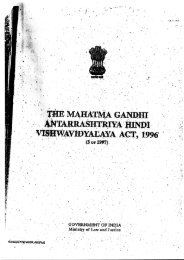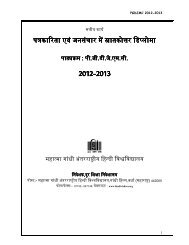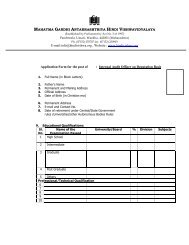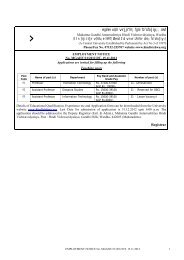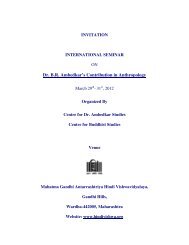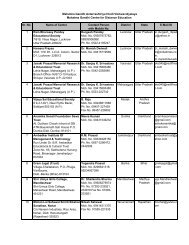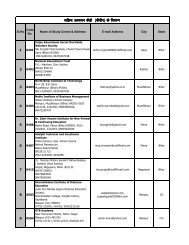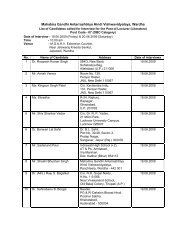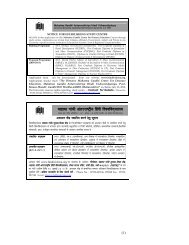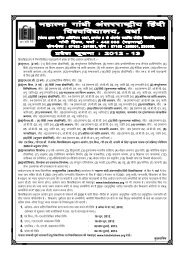Mamta Kalia
Mamta Kalia
Mamta Kalia
Create successful ePaper yourself
Turn your PDF publications into a flip-book with our unique Google optimized e-Paper software.
atrocities, and passing judgment on them,<br />
Valmiki brings them into a new discourse<br />
of human rights and justice.<br />
It is interesting to note in this regard<br />
the caste and classbased responses to<br />
a short story by Valmiki in the May<br />
2000 issue of the Hindi monthly Hans.<br />
The short story entitled “Ghuspaithiye”<br />
(Intruders) describes the physical<br />
violence directed at Dalit students in<br />
a medical college. The June issue of<br />
the publication had a letter from a reader<br />
saying that Valmiki was perhaps<br />
remembering things that had happened<br />
in his youth and claiming that such<br />
accounts of the past were no longer<br />
true.<br />
A letter in the July issue supported<br />
Valmiki, reiterating the truth of his<br />
rendering.<br />
Valmiki, like many other Dalit writers,<br />
demands the status of truth for his writing,<br />
taking issue with those who find Dalit<br />
literature lacking in imagination. Valmiki’s<br />
insistence that all persons and events<br />
in Joothan are true poses a considerable<br />
challenge to postmodernist critics who<br />
propose that autobiography’s truth is<br />
‘constructed,’ that the autobiographic<br />
narrator shapes a presentable self by<br />
reprocessing his/her memories in order<br />
to fit the present. Dalit autobiography<br />
claims the status of truth, of testimony.<br />
Naming people and places by their real<br />
names is one of the strategies through<br />
which Valmiki establishes the status of<br />
Joothan as testimony and it gives.<br />
Joothan the status of documented Dalit<br />
30 :: April-June 2010<br />
history.<br />
The timbre of the voice, for that<br />
reason, is exhortatory. It demands<br />
answers, and points out contradictions.<br />
While the text has many moments of<br />
deep sadness and pathos, its predominant<br />
mood is ironic. The narrative comments<br />
are inevitably in an ironic voice, pouring<br />
sarcasm on the cherished cultural ideals<br />
and the myths of high caste friends.<br />
Valmiki makes fun of their wellmeaning<br />
advice to him to write about universals<br />
rather than about the ‘narrow circle’<br />
of particularism. He relentlessly exposes<br />
the double standards of friends who are<br />
greatly interested in literature and<br />
theatre, and yet practise untouchability<br />
in subtle ways like having a different<br />
set of teacups for their untouchable<br />
visitors.<br />
Indeed, Joothan demands a radical<br />
shift from the upper caste and upper<br />
class reader by insisting that such a<br />
reader not forget his/her caste or class<br />
privilege. Unlike canonical Hindi or<br />
English writing where the reader’s, or<br />
the writer’s, caste and class are often<br />
considered irrelevant, Joothan’s dual<br />
addressivity problematises the reader’s<br />
caste and class. While Valmiki’s irony,<br />
satire, harangue and anger are directed<br />
at non-Dalit readers, Dalit readers are<br />
seen as fellow sufferers.<br />
While ‘we’ is demarcated to mean<br />
‘we Dalits’ in the text, the upper caste<br />
and upper class readers are distanced<br />
by the use of pronouns ‘they’ and ‘them’




